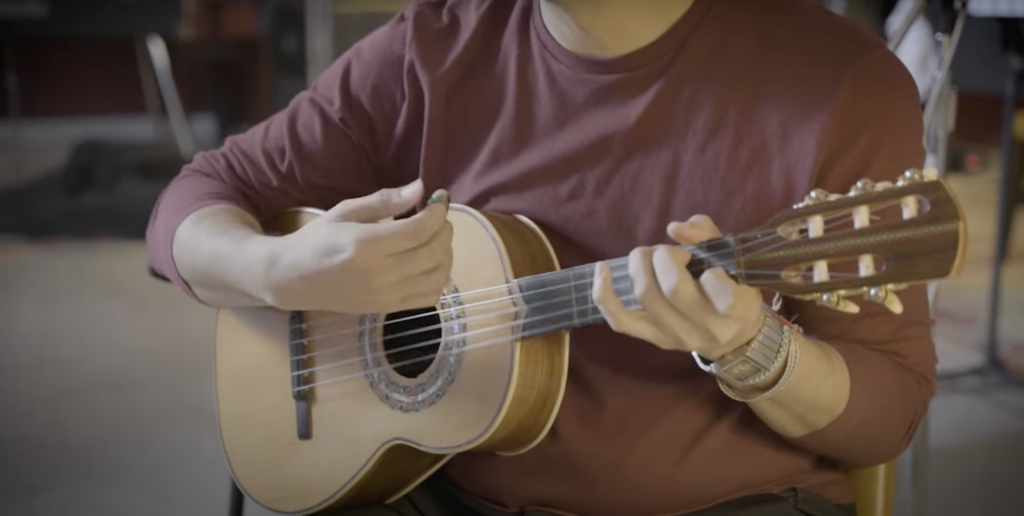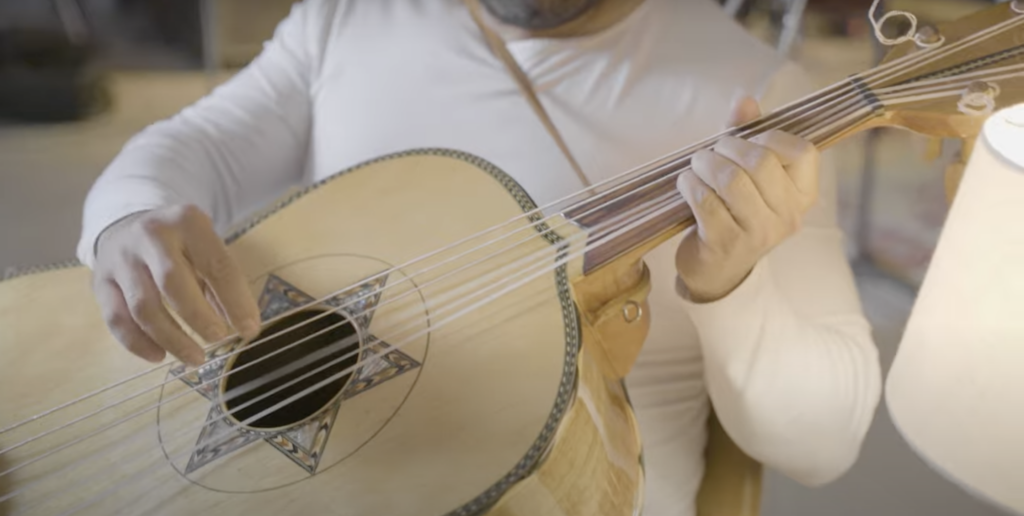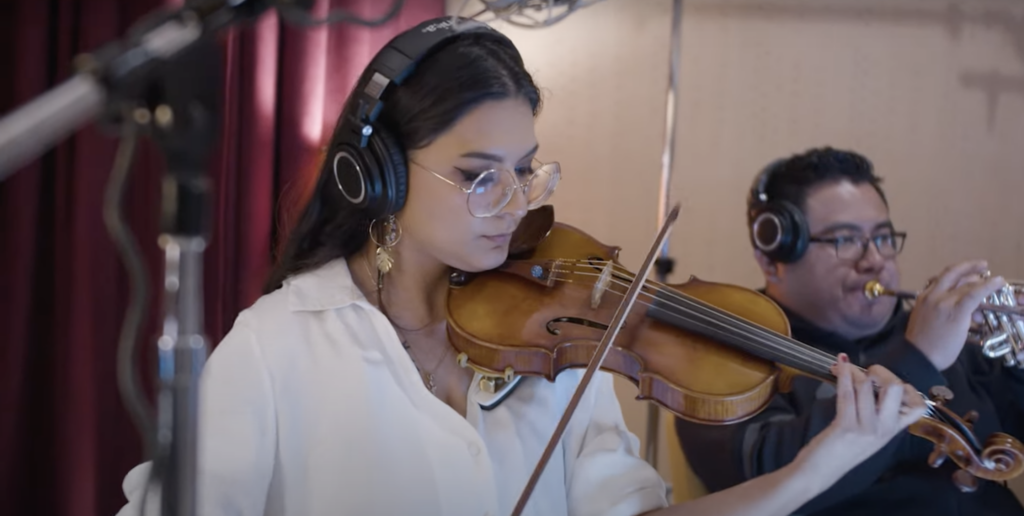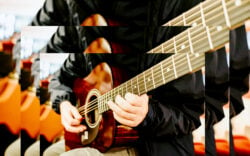When you think of mariachi, you might picture musicians dressed in charro outfits playing upbeat tunes with Spanish vocals, guitars, strings, and horns.
However, behind this vague image is a long and deep lineage of musicianship, tradition, and folklore—along with not just one, but three types of guitars. In celebration of the launch of the Corazón De Mexico sample packs, here’s an introductory guide to the rich world of mariachi instruments; read on for details, and watch the video above to hear them in action alongside insights and anecdotes from veteran musicians.
5 key mariachi instruments
Some mariachi bands may only incorporate a portion of these instruments, while others may feature additional members—that said, below are five mariachi instruments that are widely regarded as staples that define the sonic identity of the genre.
1. Vihuela

The vihuela is a high-pitched, round-backed guitar with five strings. “La vihuela is the principal rhythmic instrument in mariachi music,” instrumentalist Jason Molina explains. “I gravitate towards it because of all of its rhythmic intricacy. Along with the guitarrón, it forms the foundation of the mariachi, and it’s so much fun to play that role.”
2. Guitarrón

The guitarrón is a large and deep-bodied six-string acoustic bass guitar. “It’s an instrument that holds a lot of responsibility, because you’re the bass,” guitarrón player Diego Barba shares. “You have to be aware of what the melodies and harmonies are, because the guitarrón player has to support the others. Your responsibility is to provide the bass, the structure, the beat, and the timing at all times.”
“The dynamics of a guitarrón in the mariachi band is super important, because you could say that if there’s no bass, there’s no heart—you can’t feel the intention of the music. The communication is tied together by the guitarrón.”
3. Guitar

Alongside the vihuela and guitarrón, the classical guitar (also known as the Spanish guitar) is also a core ingredient of mariachi music, often serving as the bridge between rhythmic and harmonic ideas. “When I was around five, I had a broken guitar, and there was something about it,” guitarist Vincent Peqeuño tells us. “I guess because there were no iPads back then, I had no choice but to play the guitar and be like, ‘Oh hey, that makes a noise, and that makes a different noise.’ Growing up with that is always something that I appreciate because the guitar let me make a lot of friends, and it’s how I continue to make a lot of friends.”
4. Trumpet

In a mariachi band, the trumpet is often responsible for playing the melody. “The role of the trumpet in mariachi music is to be the presence—the musicality of the sound,” trumpeter Raúl Martínez says. “How its characteristics change with pitch is what I like the most.”
“What I’m most passionate about is trying to express what I cannot with words. Sometimes, you have something stored up, some feeling that you can’t find a way to release—I think the trumpet lets me find a way to release those things.”
5. Violin

“The violin plays an important role in mariachi as the melodic instrument—alongside the trumpet, it’s the second voice of mariachi,” violinist Sandra Mayorga-Martínez tells us. Often times, the violin will play in unison with the trumpet, but it may also engage in countermelodies and call-and-responses. Larger groups could have multiple players to constitute a full violin section.
The impact of mariachi music
While mariachi is often seen as a ‘traditional’ form of music, it continues to morph and evolve, both influencing and absorbing influences from other genres.
“Mariachi is a very multi-genre style of music,” Mayorga-Martínez shares. “We incorporate a lot of folk music and jazz, along with other sounds from the Caribbean, South America, and the United States.”
“It’s a music that speaks to the world. Anybody can listen to it, and it’s very joyful music to be around—it’s one of those genres that really lifts your spirits. It’s meant to do that; that’s why we have mariachi for almost every event that you can think of. It doesn’t matter what—you’ll always find mariachi there.”
“Traditional music attracts my attention because of all of the folklore, and because the roots have been lost,” Barba responds. “The essence of Mexican music has been deformed. For that reason, I started to investigate, to work, and to study the instruments that belong to us and how to make them functional. I do this because it’s fantastic—my instrument has everything.”
Incorporate the timeless sounds of mariachi instruments into your own productions:
June 12, 2024

.svg)
.svg)



